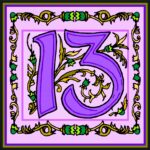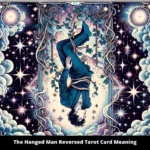The world of tarot is a voyage through the subconscious, an exploration of archetypes that mirror the human experience. Among these archetypes, there exists one that embodies the essence of performance, charade, and the multifaceted nature of identity—the actor. This tarot card, often associated with the vibrant creativity intrinsic to the theatrical realm, holds a unique allure, encapsulating the essence of transformation and storytelling.
When one considers the tarot card that symbolizes the actor, the Fool emerges as an intriguing metaphor. In the tarot, the Fool is not merely a jester; rather, it is the embodiment of potential, spontaneity, and the uncharted path of life. Historically, the Fool stands at the precipice, ready to embark on a whirlwind journey filled with myriad experiences, similar to an actor stepping onto the stage for the first time. This card signifies the willingness to embrace the unknown, a quality that is quintessential for anyone taking on a transformative role, be it in theater or in life.
Imagine the Fool’s journey as a vibrant performance, where each step taken is an exploration into different personas. This concept resonates deeply within the theatrical arts, where actors constantly shapeshift to embody diverse characters. The Fool invites us to shed our inhibitions, harness our creativity, and view life as an improvisational act. In doing so, this archetype encourages vulnerability—the willingness to risk failure in pursuit of truth, allowing individuals to unveil layers of their own existence, much like an actor revealing the complexities of their character.
The symbolism extends further; the Fool often travels with a small dog, representing loyalty and instinct. This faithful companion can also symbolize the guiding voice of one’s inner self. Just as actors rely on their instincts to navigate their roles, the Fool embodies the necessity of trusting one’s intuition, challenging the performer to delve deeper into their psyche and embrace the characters they portray. This duality—the actor and their role, the self and the performance—is central to the Fool’s message.
Embarking on the path of the Fool leads one to the theatrical stage of life, where transformation takes center stage. Actors thrive in environments of change, adapting to various narratives and settings. Each performance is a microcosm of larger life experiences; they relay universal themes that resonate with audiences. Within the tarot framework, this dynamic reflects the journey of self-discovery that accompanies the exploration of different facets of identity.
The actor’s narrative is seldom linear; it is an elaborate tapestry of triumphs and tribulations, wisdom gleaned from countless rehearsals, and profound realizations born from public vulnerability. Each card drawn in a tarot reading can signify moments of epiphany—instances when one realizes that every role they play, whether onstage or off, contributes to the overall narrative arc of their existence.
The appeal of the Fool goes beyond mere performance. It serves as a reminder that life, like a play, is an amalgamation of joyful and sorrowful acts. This profound perspective assists not only actors but anyone seeking clarity in their quest for authenticity. In this sense, the card invites introspection, urging individuals to examine the roles they adopt in social scenarios—where do they wear masks, and when do they allow their true selves to shine?
Actors as the Masters of Duality
Delving deeper into the archetype of the actor, one must acknowledge their profound ability to navigate duality. In acting, the performer confronts contrasting emotions—happiness is intertwined with grief, courage wrestles with fear. This spectrum of emotion finds its manifestation within another significant tarot card: the Two of Swords. This card portrays a figure blindfolded, holding two crossed swords, symbolizing the duality inherent in decision-making and the struggle between conflicting choices.
This imagery resonates with the actor’s craft, where decisions regarding character portrayal can lead them down divergent paths. Each choice influences the performance’s outcome, its emotional trajectory, and the audience’s response. The Two of Swords invites reflection upon the complexities of self-representation, as actors often grapple with the decision of authentically expressing their truths while remaining relevant to their audience’s expectations.
In wider contexts, the duality of the actor serves to elevate their performances, offering audiences a glimpse into the nuanced spectrum of human emotion. Theater acts as a conduit for this exploration, revealing broader truths about society and the human experience. The actor’s role is to reflect these truths, often enacting catharsis for both themselves and the audience, thus reinforcing the transformative power of theater.
The Call to Authenticity
At its essence, the exploration of the tarot card that represents the actor asks for authenticity in the world of performance and beyond. Every audience encounter is an opportunity for shared understanding. Therefore, embracing the inner Fool requires surrendering to the moment, allowing oneself to be fully present in life’s ever-evolving playbook.
As life unfolds its scenes, the self-discovery intertwined with the archetypal Fool and the complexities represented by the Two of Swords offers a roadmap into the depths of personal and artistic expression. Embracing this journey—you open the curtain on a kaleidoscope of potential, inviting all players to take a bow before the franchise of existence.
In conclusion, the tarot card that symbolizes the actor transcends mere performance. It prompts an exploration of the intricate layers of identity, the embracing of transformation, and the resonating call to authenticity. Each act, whether on stage or in the grand theater of life, encapsulates the rich interplay between the ego and the essence of being, where performance becomes a mirror reflecting the truths we all harbor—a reminder that we are all actors in our own stories, endlessly engaging in the art of narrative creation.








Leave a Comment